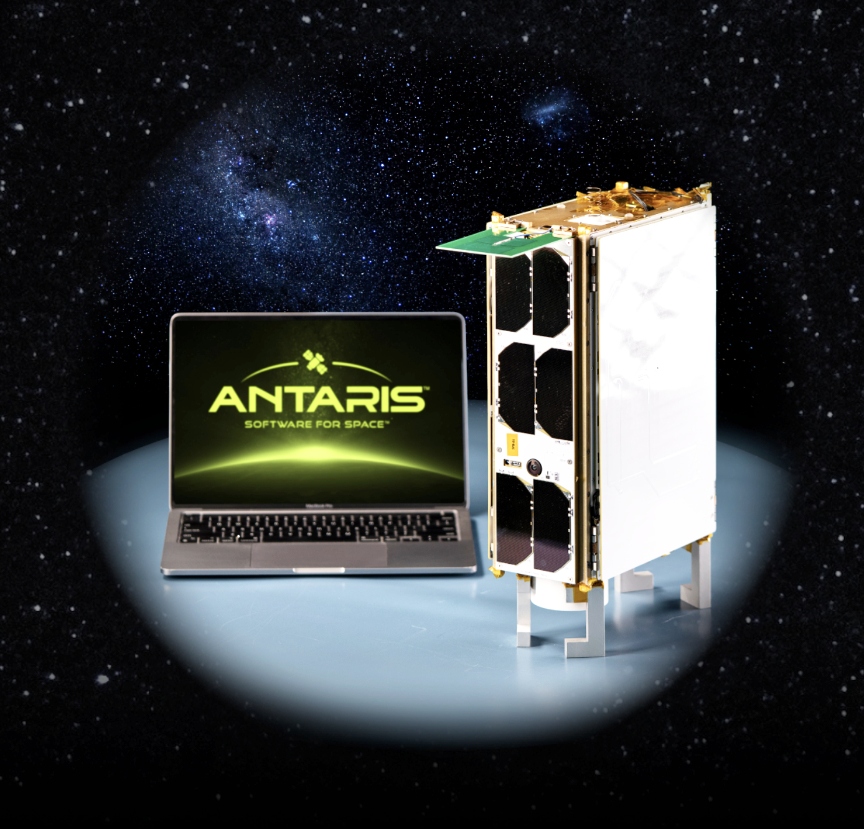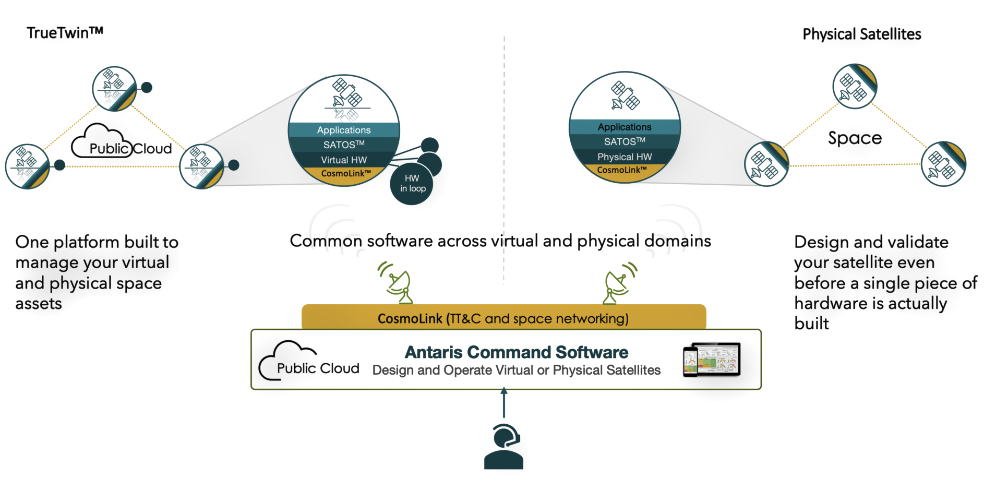
The Antaris JANUS-1 smallsat has successfully reached orbit — JANUS-1 rode on the Indian Space Research Organization’s (ISRO) SSLV-D2 rocket, which was launched from the Satish Dhawan Space Centre of India under a commercial arrangement with New Space India Limited (NSIL). The satellite features five payloads from a range of global providers and those will be commissioned and begin nominal operations during the coming days.

Additional tech demonstration satellites from Antaris and manufacturing partners Ananth Technologies and XDLINX Labs are planned for 2023, including 6U, 12U and 27U satellite reference architectures.
JANUS-1 is a 6U satellite featuring payload and subsystem technologies from AICRAFT, Morpheus Space, Netra, SayariLabs Kenya, SpeQtral, Transcelestial and Zero-Error Systems (ZES) that will perform Internet of Things (IoT) communications, advanced experimental laser communications, radio communications and machine learning (ML) during orbit.
Antaris SatOS software manages core bus responsibilities while orchestrating multi-tenant payloads and onboard computing — in addition to showcasing secure TT&C (Telemetry, Tracking and Command) protocols with Amazon Web Services (AWS) and ATLAS Space Operations, who are providing ground communications services.

The project was completed in just 10 months from concept to launch readiness with a cost savings of 75% over comparable satellite missions. Based on data captured during the build, Antaris anticipates that future spacecraft missions can be ready for launch in as few as six months.
While the launch marks the start of JANUS-1’s on-orbit mission, the satellite has been ‘in flight’ for months via the company’s unique TrueTwin™ digital twinning technology that creates a digital version of the satellite at the start of the project and then integrates with hardware-in-the-loop as hardware becomes available.
“This is a very proud moment for our company and the global space ecosystem,” said Antaris Co-Founder and Chief Technology Officer, Karthik Govindhasamy. “We did something that has never been done before—we designed, built and launched a complex satellite in just months, not years, at a fraction of traditional costs. Our cloud-based platform made this all possible, and we have proven that this software is the future of the satellite industry.”
“We’re so proud of the entire Antaris team and our incredible manufacturing partners,” noted Antaris Co-Founder and CEO, Tom Barton. “Together, we have broken down major barriers that have historically hampered satellite design and production. We hope JANUS-1 will serve as an inspiration to the entire space ecosystem and look forward to partnering with other New Space pioneers who are ready to go fast and work with us to make space easy. Antaris software dramatically simplifies the design, simulation and operation of satellites. We bring New Space thinking to an Old Space world, giving our customers maximum control and flexibility while improving time-to-orbit, reducing costs and optimizing engineering reuse.”
The following is a congratulatory letter to ISRO from SIA-India, an association for space industry, regarding the completion of their JANUS-1 satellite.

Congratulations to ISRO on the successful completion of the SSLV-D2/EOS-07 mission! The mission is a testament to ISRO’s hard work and dedication. Placing EOS-07, Janus-1, and AzaadiSAT-2 into their intended orbits flawlessly showcases ISRO’s commitment to advancing the space industry and driving innovation.

SIA-India extends felicitations to Ananth Technologies and Antaris on the successful launch of the JANUS-1 satellite aboard ISRO’s Small Satellite Launch Vehicle (SSLV-D2) on February 10, 2023. The satellite, which is a software-defined 6U technology demonstration model, was designed and constructed using the Antaris cloud software platform, SatOS™ software, and XDLinx’s modular Spacecraft Bus, with Ananth Technologies serving as its Master Systems Integrator. The complete Assembly, Integration, and Test process was carried out successfully at Ananth Technologies’ new facility in Bangalore’s Aerospace Park, where the high-efficiency Solar Panels of JANUS-1 were also fully indigenized.
Additionally, the Thiruvananthapuram unit of Ananth Technologies made significant contributions to the country’s space vehicle launch, SSLV, and also to the ISRO Satellite EOS. The Bangalore spacecraft team of Ananth made contributions to the EOS-7 satellite, the primary payload of the SSLV-D2 launch, by developing various avionics subsystems including IRU, BMU, LEMA, and DC-DC converter packages. The unit also provided test support for Azad Sat at its Bangalore facility.
International collaboration and partnerships have played a crucial role in the success of both the SSLV-D2/EOS-07 mission and the launch of Janus 1. These collaborations have allowed for the pooling of resources, expertise, and knowledge, leading to innovative and successful missions. The success of these collaborations showcases the importance of international cooperation in advancing the space industry and driving innovation.
